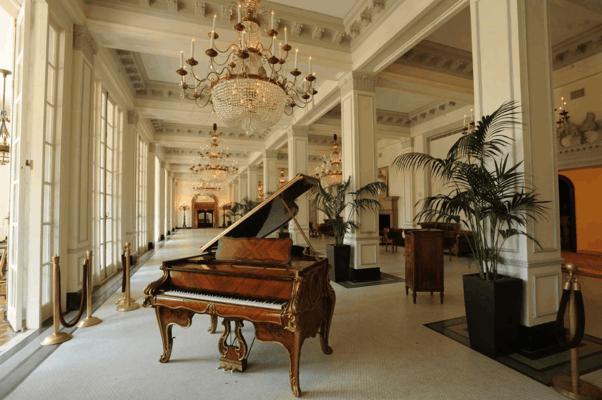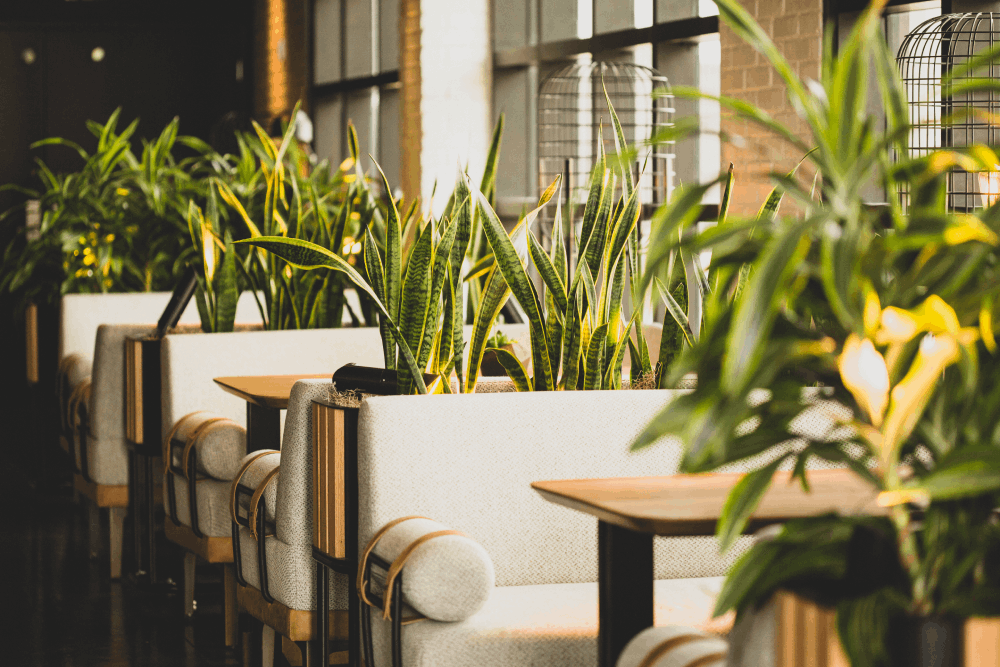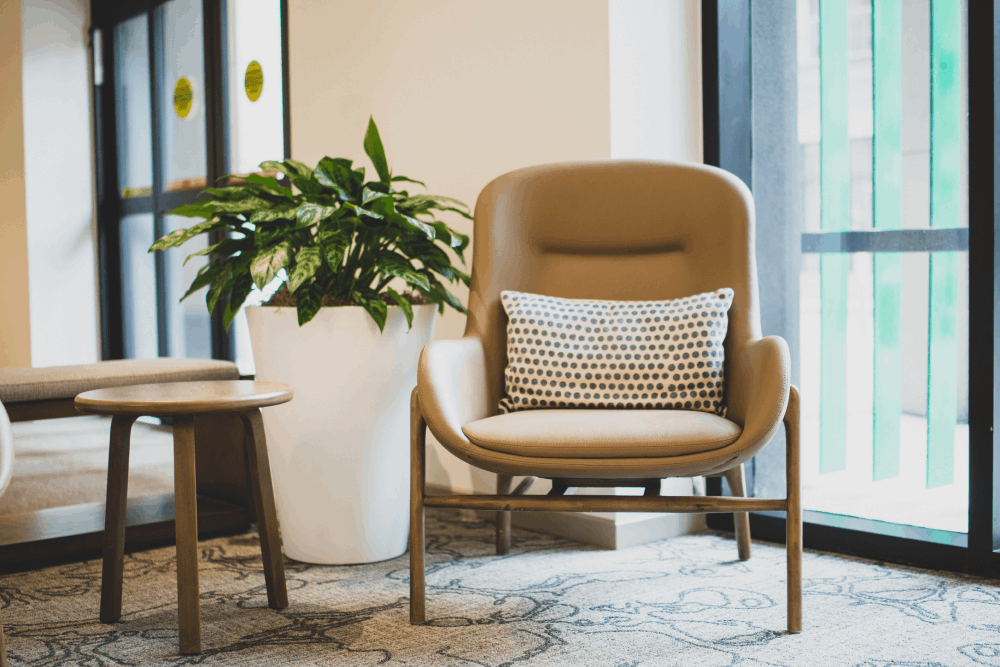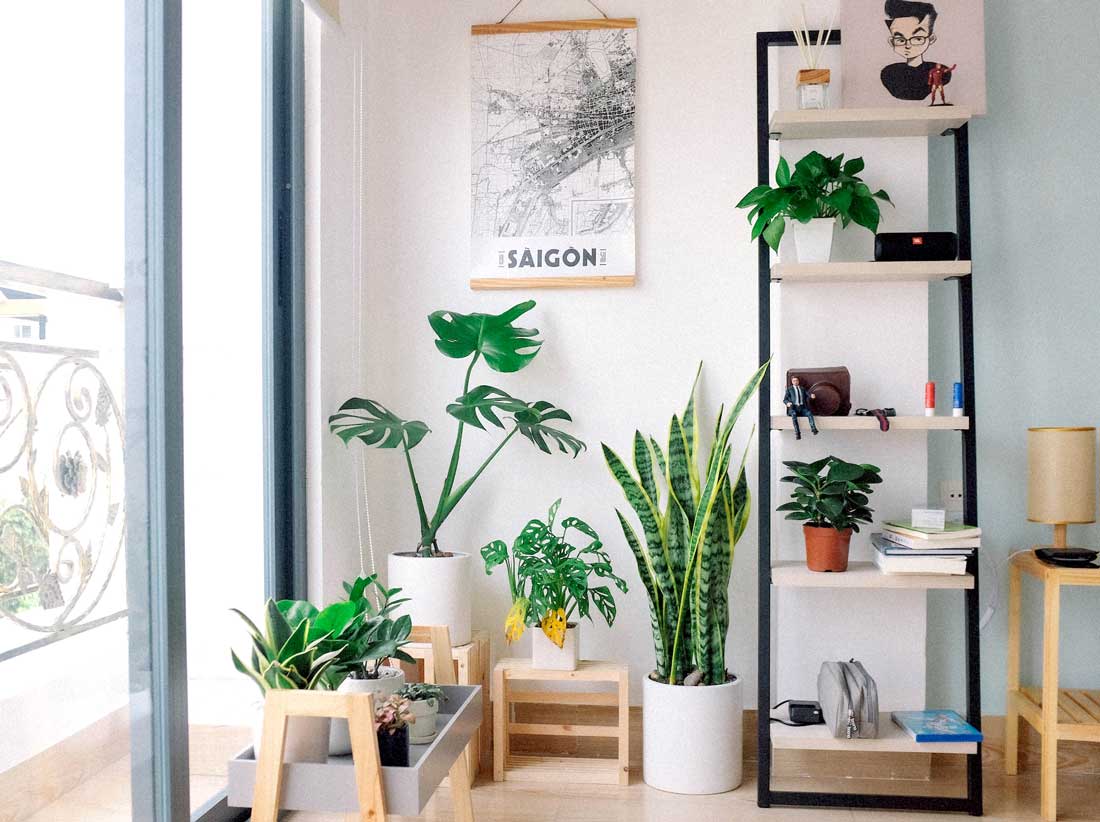Elevate the hotel guest experience and boost your bottom line with biophilic design and live greenery, utilizing strategic plant design.
A thriving hospitality business is one that evokes a clean, professional, and stylish ambience while also eliciting a feeling among guests that their hotel is a home away from home. The best hoteliers know that hotel plant design not only contributes to the wellbeing and overall satisfaction of employees and guests, it also supports operational efficiency and provides economic benefits.
The benefits of incorporating greenery and indoor plants into hospitality spaces like hotel rooms, lobbies and restaurants are countless, and have been proven to elevate the overall guest experience, as well as the hotel’s business outcomes.
According to nonprofit organization Green Plants for Green Building, which works to communicate the benefits of incorporating nature into work and living spaces, adding a carefully curated selection of indoor plants and greenery to your hospitality space can improve your guests’ overall experience, lowering depression rates by 58%, cutting chronic fatigue by nearly 40%, and improving the productivity and creativity of both guests and employees by 15%.

Thanks to the tranquil environment facilitated by biophilic design, hotel rooms, hotel lobbies and hotel restaurants that incorporate plant life into their design have a calming and peaceful effect on guests, making their stay both pleasant and memorable. This drives customer satisfaction and loyalty.
One of the primary benefits of hotel plant design is repeat business and favorable reviews, which ultimately drives revenue. But this isn’t the only benefit of greenery in the hospitality space:
1. Indoor Plants Reduce Maintenance Costs

Indoor plants have an obvious impact on the environment, boosting health and wellness while adding to the aesthetics of a hospitality space. But did you know about the economic impact of plants?
Research shows indoor plants can reduce a hotel’s maintenance costs by improving the efficiency of operations. Through photosynthesis, the right amount of plants strategically placed throughout a hotel can help lower the indoor temperature by 10°C, with one study finding that one healthy tree can have the same impact as ten air conditioners working for 20 hours a day.
Moreover, indoor plants release moisture in the air, raising the humidity levels in a building within the human comfort range of 30% to 60%. Not only is this a helpful and cost-effective way to maintain a comfortable indoor humidity level, it also reduces maintenance costs by protecting the structure of a building, as most construction materials (like wood, bricks and paint) are impacted by unfavorable humidity levels.
In areas of high humidity, condensation on walls and windows can affect the structural integrity of a building, with unnecessary moisture promoting the growth of mold and mildew. It also causes poor air circulation in communal areas, like lobbies and restaurants. Indoor plants can offset this risk, thereby lowering potential damages, which can be costly.
It’s well documented that incorporating indoor plants and greenery into hotels and restaurant décor is a strategic investment with tangible results. This is because indoor plants:
- improve the air quality in a building, creating a healthier environment for guests and employees, and
- absorb and diffuse distracting background noise; enhancing the acoustics of communal spaces.
Moreover, by reducing a building’s overall energy consumption, effective hotel plant design can help reduce the hospitality industry’s demand for fossil fuels, lowering its carbon footprint. This translates to long-term savings for hotels, adding to the many benefits of prioritizing greenery in the hospitality sector.
2. Indoor Plants Enhance Guest Satisfaction
Writer Maya Angelou once said that people will forget what you do and say, but they “will never forget how you made them feel”. And the same goes for hotels. Guests might forget about the finer details, and they might even forget specifics about the interior décor and plant life that you carefully select and curate. But they will never forget the way they felt, or were made to feel, during their stay.
This is why the customer is always king. The notion is true in retail, but even more so in hospitality. Hospitality best practice means prioritizing the wellbeing of each guest, which goes beyond meeting their immediate needs. Even if a guest has booked in for business and not pleasure, they should always feel peaceful and well attended to. One of the least resource-intensive ways of fostering this kind of wellbeing is subconsciously, through biophilic design that leverages human's natural affinity for nature.

Research on the impact that a green experience has on customer satisfaction draws a direct correlation between hotel greenery and increased spending. Psychologically, this is attributed to the welcoming atmosphere promoted by indoor plant life. Clever and thoughtful biophilic design entices guests to linger longer, indulge in additional services, and could secure a future booking.
Also known as “the leafy revolution”, trending biophilic design ultimately enhances overall guest satisfaction by contributing to the holistic needs of hotel guests. This means hotel plant design also has the potential to increase occupancy rate and per-guest revenue.
However, it’s important to remember that not just any greenery will do. You need to consider both the aesthetic goals of your hotel plant design, as well as the sustainability of your plan. For instance, will your greenery live and thrive across all seasons? Are your plants easy to maintain in your climate? Are you able to give them the care and attention they need to flourish?
Choosing the right plants for your hotel will maximize your return on investment by ensuring that your space remains beautiful and reflects a high-level ofsophisticationy. And the main upside? Guests will always stay longer and spend more money in a space where plants are thriving, even if they don’t realize it. Studies have proven that indoor plants and greenery are effective economic contributors.
To ensure that your hotel greenery thrives all year long, consult with a specialist in horticultural and hotel plant design, like Natura. Consulting with a company like Natura, and investing in the right indoor plant design and green living walls for your space and climate, will both improve the look and feel of your establishment. It will open your business up to the many benefits that plant life has to offer.
This investment – which you’re likely to get back tenfold – will improve the air quality of your hotel, regulate room temperature, and even contribute to a quiet environment that’s easy on the ear and nervous system (which is essential in our typically overstimulated climate).
While the benefits of hospitality plants are countless, they work especially well to create a comfortable and inviting atmosphere for guests, which ensures higher occupancy rates and secures future revenue.

3. Hotel Lobby Plants Make a Good First Impression
A complete overhaul of your entire hotel’s décor might be too overwhelming all at once. So, if you’re wondering where to start, the hotel lobby is always a good place.
The lobby introduces your hotel, providing the first lasting impression of the type of establishment you’re running. If you’re going for high-class and luxurious or cozy and homey, strategically placed and visually appealing plants can help set the tone for every guest’s stay.

Whether you’re making use of indoor plants in the lobby or a green living wall, healthy and thriving plant life in your entryway and main communal area drives home the message that you’re running an organized and successful hotel.
A plant-populated lobby also offers a stark contrast from the outside, promoting positive and happy feelings associated with plant life and greenery. This is especially true if you’re based in a city, and it serves as a subtle reward for those guests who choose your hotel over any other establishment.
And, as their stay increases, guests who are booked into hotels that embrace living walls and greenery report feeling healthier, more motivated, generally more positive, relaxed, engaged and at peace than they usually are.
Moreover, plants improve air quality (a critical component to our health) by filtering out pollutants, and reduce airborne contaminants by regulating humidity levels. This impacts directly on the physical health of guests, reducing allergic reactions and respiratory issues among guests.
Indoor plants for hotels also ensure improved air supply and a psychological lift among guests, which is conducive to creativity and productivity. Greenery does so much to encourage the wellbeing of guests (and even the wellbeing of employees), which further reinforces its importance in hotels and other places that provide hospitality services.
4. Indoor Greenery Reduces Noise Pollution
Plants’ ability to absorb and diffuse disruptive noise is another great benefit of incorporating plant life into a hotel’s architectural and interior design.
A hotel without appropriate insulation can be disturbingly noisy. When sound isn’t absorbed, it bounces between rooms and walls, creating echoes and sound transmissions that can be loud, jarring, and unpleasant.
However, strategically placing indoor plants in a hotel lobby, or adding a living green wall to create divisions are aesthetically pleasing backdrops in an open space, which effectively reduces disruptive white noise and contributes to a peaceful and welcoming environment.
Thanks to its noise abatement capability, hotel greenery serves as a natural barrier that helps mitigate elevated noise levels in busy environments by up to 50%. Ultimately, this serves to create a more serene and inviting atmosphere for guests, enhancing their overall experience and satisfaction.
5. Living Walls Leave a Lasting Impression
Green or living walls are a trendy and versatile way to incorporate biophilic design principles into hospitality spaces. Serving as visually appealing focal points, green walls show guests that you’re invested in their experience and the appearance of your hotel.
Here's how Natura Transformed The DoubleTree Hilton Hotel with Biophilic Design
%20(1).webp?width=4032&height=3024&name=IMG_3004%20(1)%20(1).webp)
Flourishing indoor greenery communicates to guests that you can take care of things (including the needs of your customers), and that you take pride in the overall look and feel of your business, as well as its ambience. It also tells customers that you value the positive, life-affirming properties of plants, and that you’re an eco-conscious establishment.
The value of indoor plants and greenery in hotels is multifaceted, which is why Natura believes they should always be included in your overall design, even during the concept design phase. The fact that plants and greenery evolve through seasons is also a boon for your hotel, as indoor plants and living walls ensure your space always looks fresh, innovative, and on trend.
This is especially true for green or living walls. Not only do they serve as visually appealing focal points and creative room dividers, but they also offer all the same environmental and economic benefits as potted indoor plants, including improved air quality, reduced energy consumption, and enhanced guest satisfaction.
Making Spaces Meaningful with Biophilic Design
Hotels and hospitality spaces use biophilic design – the practice of integrating elements of nature into the built environment – in response to the customers’ intrinsic need to connect with nature.
Biophilic design is what informs a holistic approach to architecture and interior design, integrating natural elements (plants, water features and natural light) into hotel design. It also leverages the positive impact of plants on the health, emotional wellness, and cognitive ability of guests that enter the space. It’s a way of incorporating nature-inspired elements to curate a calm, soothing and tranquil environment.
And, because biophilic design is commonly being implemented in hotel lobbies, restaurants and other communal areas, it also serves to create memorable and immersive guest experience, as well as a socially connective guest experience.
However, in more intimate spaces, biophilic design is also being implemented to add value to individual hotel rooms. Research shows that modern consumers respond well to service providers that go above and beyond the basic expectations of “a clean room and comfortable bed”.

In locations where scenic, mountain views or oceanscapes aren’t possible, biophilic design could up the ante of what would otherwise be a standard, albeit clean and comfortable, hotel room and living area.
This is why we pride ourself on our expertise in biophilic design. We know the benefits of horticulture are far-reaching, impacting both the guest experience and the clients’ bottom line. We thrive when plants and indoor greenery thrive, because it means our clients are thriving too.
Read about our WELL certification
Not too long ago, we used biophilic design to rejuvenate the DoubleTree Hilton Hotel in San Antonio, Texas. This was the perfect example of how we were able to enhance the look and feel of a space with hotel plants and living walls, transforming an old design to bring life, evolution, and renewal to an establishment, without compromising the Hilton name or reputation.
Aligning with the WELL Building Standard
Natura is proudly aligned with the WELL Building Standard, a performance-based system used to measure, certify and monitor features of the built environment that impact human health and well-being.
Established by the International WELL Building Institute (IWBI), and backed by the latest scientific research, the WELL Building Standard is an internationally recognized license and certification awarded to companies, like Natura, that create thoughtful and intentional spaces with the aim of enhancing human health and wellbeing.

The standard comprises a set of ten key categories drafted by a diverse community of industry professionals – including public health professionals and building scientists – to provide a basis for health and wellness in the built environment.
The strategies “aim to advance human health through design interventions and operational protocols and policies” that impact on:
- Air
- Water
- Nourishment
- Light
- Movement
- Thermal Comfort
- Sound
- Materials
- Mind
- Community
Ultimately, the goal of the WELL Building Standard is to foster and support a culture of health and wellbeing in commercial and public spaces, like offices, hotels, and even restaurants. WELL believes that companies actively addressing the ten aspects of the built environment are focused on reducing their environmental impact, as well as promoting healthier outcomes for building occupants.
Hotels looking to be WELL certified must prove their commitment to creating spaces that prioritize both the environment and the comfort, safety, and wellness of their guests. As a WELL-certified service provider, Natura will support all of our clients looking to comply with WELL standards with the aim of being WELL certified.
For Natura, the road to achieving the WELL licensing partnership was long, but we have ensured our business aligns with delivering the proper WELL initiatives through live plants. Our mission is to create environments where people thrive! We will endeavor to do the same for our clients, especially hoteliers who prioritize the comfort, safety, and wellness of their guests, and value the impact of living plants and greenery.





